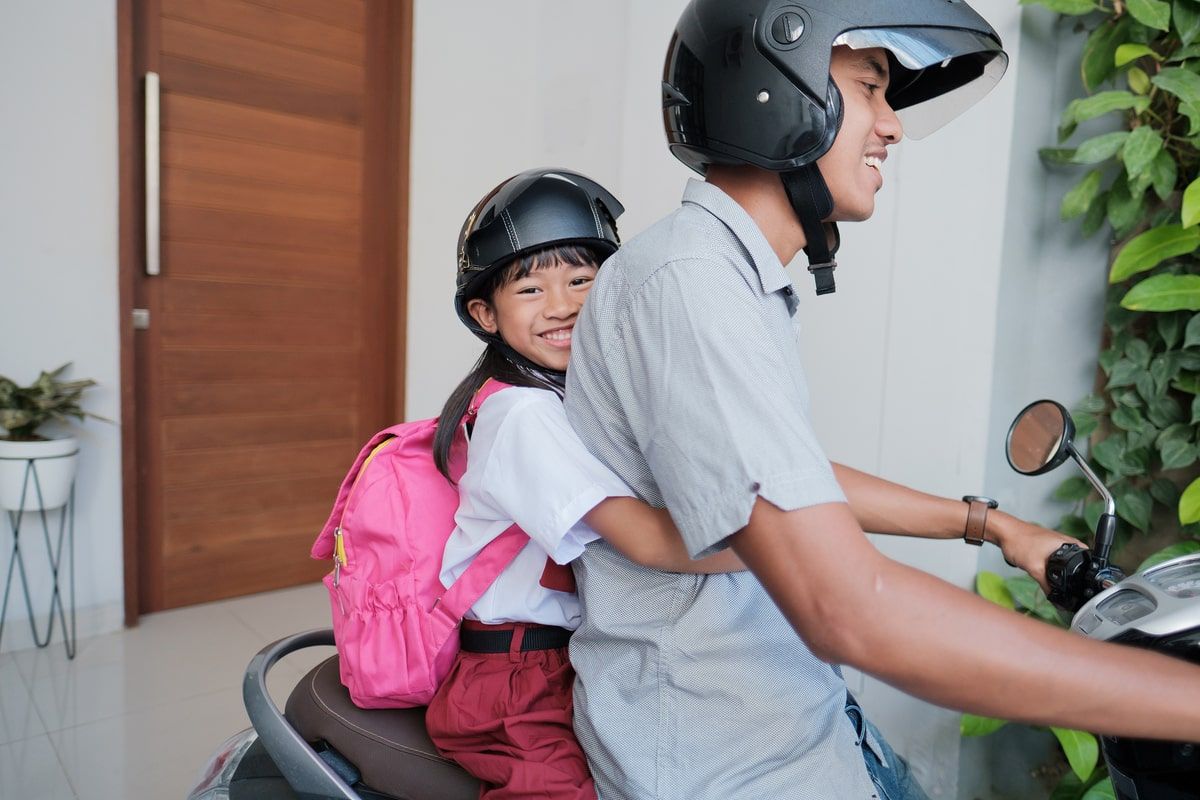Can Kids Ride on Motorcycles?
It's a cool autumn Saturday morning, and the conditions are just right to cruise on your motorcycle. Your nine-year-old is asking if they can come with you. But you may wonder: are kids legally allowed to ride on the back of a bike? Is there a required passenger age on motorcycles?
Understanding the legal age for a child to ride on the back of a motorcycle primarily depends on the state in which you live. Generally, the child's height is also taken into consideration. When considering letting a child ride with you, exercise caution and assess the overall safety conditions for that day.

Laws Regarding Kids and Motorcycles
Five states have laws that establish a minimum legal age to ride a motorcycle. In states that regulate motorcycle passenger age limits, the range is from five to eight years old. For instance, Arkansas requires passengers to be at least eight years old. In Hawaii, the minimum age is seven, while in Louisiana, Texas, and Washington, it is five.
The other 46 states and territories have no restrictions on passenger age or size. The standard in most states is based on the passenger's height, not their age. Passengers must be tall enough to reach the footrests and aware of the need to hold on to the driver. A motorcycle passenger typically needs to be at least 4 feet 9 inches tall. A child passenger must also:
- Be mature enough to handle the responsibilities of being a passenger
- Wear a properly fitted helmet and protective gear
- Be able to hold on to the driver or handholds firmly.
Whether based on height or age, it's always best to use good judgment when preparing to ride. Ensure you follow safety equipment and driving recommendations when deciding if it's safe to ride a motorcycle with a passenger, whether it's a child or an adult.
Georgia Specific Kid-Related Hog Laws
You might have noticed in the above paragraph that Georgia is not included in the list of states that set an age limit for passengers on motorcycles. That's because there isn't one. Generally speaking, the Peach State has "universal laws," meaning that certain automotive laws apply to everyone, regardless of age. For example:
- Passengers must have footrests.
- Passengers must have a designated seat behind the driver.
- Passengers must wear a helmet.
- Passengers must wear eye protection if wearing a helmet without a face shield.
- Passengers must wear protective footwear.
If the child passenger cannot reach the footrests due to their height, they will be unable to ride. Likewise, if there is no sidecar or designated seat for them, they can't ride. Under no circumstances is it legal to place a child in front of you, between your arms, on the bike.
If you are taking your kid on a motorcycle, regardless of the motorcycle's passenger age limit, they need to wear the same safety gear as you do. This includes a well-fitting helmet, long pants, closed-toe shoes to protect their feet, a thick coat, and gloves to protect their hands. It's also a good idea to wear bright, visible clothing to increase visibility in traffic.
Things to Consider
- Helmets are 37% more effective in preventing motorcycle-related deaths than not wearing one (The Center for Disease Control, CDC).
- Motorcyclists comprised 14.6% of all crash injuries in 2022 (University of Berkeley, UCB)
- Helmets reduce head injuries by 69% (CDC).
- 26% of road traffic deaths for people aged 10-24 were associated with motorcycle riding (National Highway Traffic Safety Administration, NHTSA).
- Of 42,939 traffic fatalities, 3% were children 14 and younger (NHTSA).
Riding Checklist
Conducting a safety check should be a regular step before every ride. Ensuring your bike is in good condition, especially before taking a child along, is crucial. Some tips for motorcycle operators to keep in mind include:
- The motorcycle must be designed to accommodate a passenger.
- The passenger should mount after the motorcycle's stand is raised and the bike is securely braced.
- The motorcycle's suspension and tire pressure may need adjustment.
- Do not exceed the weight limitations specified in the owner's manual.
- Keep feet on footrests at all times, even while stopped.
- Passengers should keep their hands and feet away from hot or moving parts.
- Avoid turning around or making sudden moves.
- Allow more time for passing.
- Avoid extreme speeds.
- Passengers may slide forward, bumping into you during hard braking.
Steelhorse Law: Your Guide to Kids and Motorcycles
So, when your child asks you, "Mommy, Daddy, how old do you have to be to ride a motorcycle?" ensure you have the correct answer for them and remember that, in Georgia, there is no age requirement! Taking a kid on a motorcycle ride could be the beginning of a lifelong interest in riding. It's crucial that, as the responsible adult, you exercise precautionary measures before heading out to make it a safe and enjoyable experience.
To learn more about Georgia motorcycle laws and how they affect you, contact Steelhorse Law. We're experienced in all things biker-related and are prepared to answer your questions! Our team is waiting to take your call.
